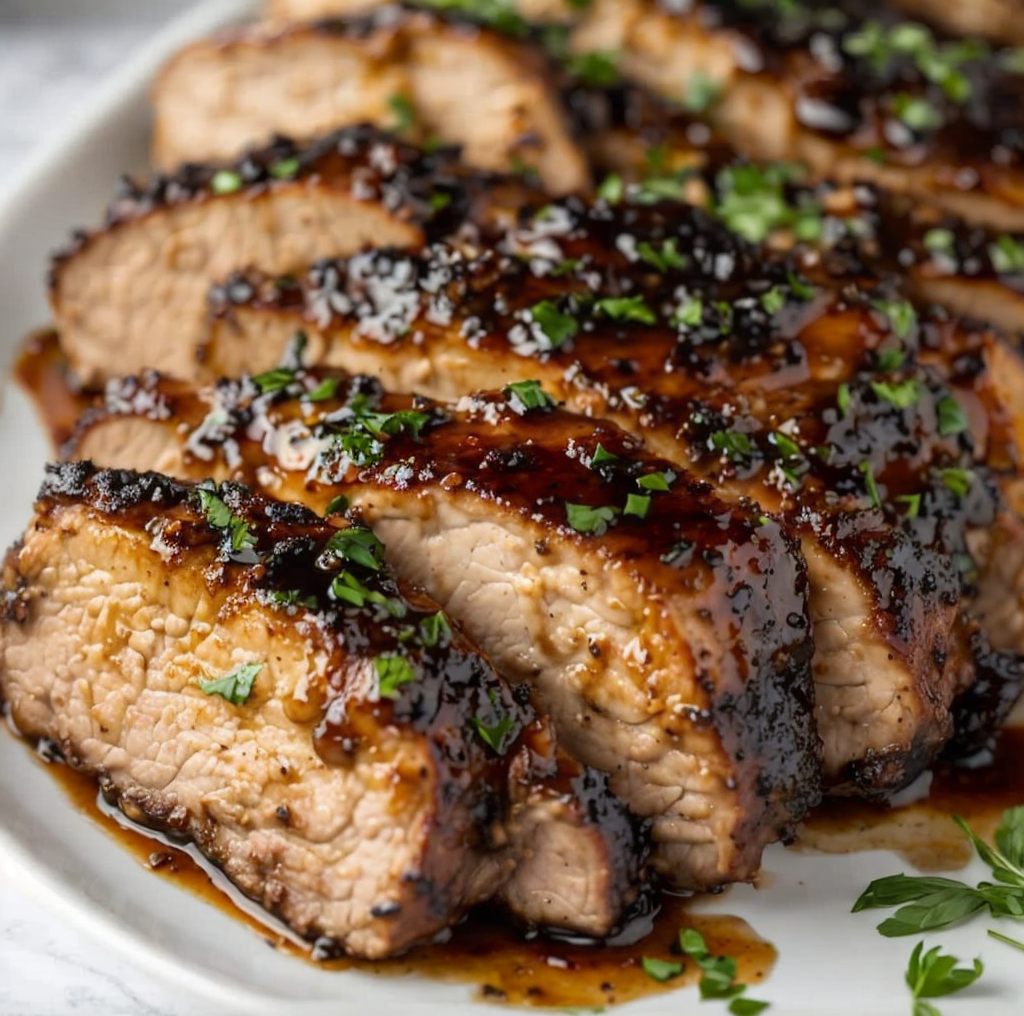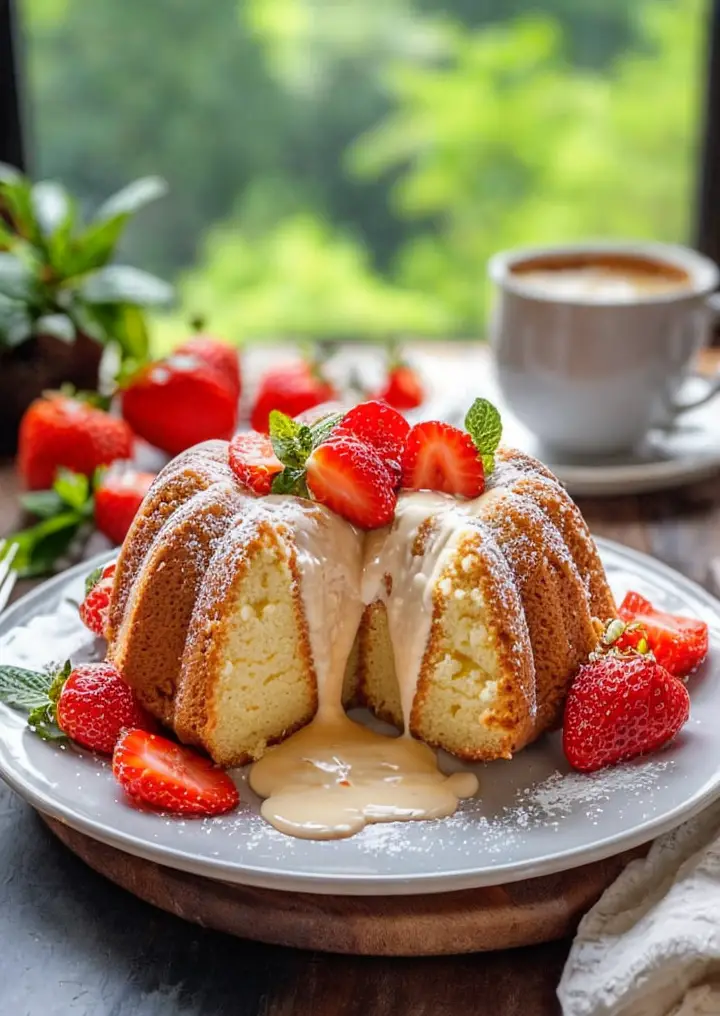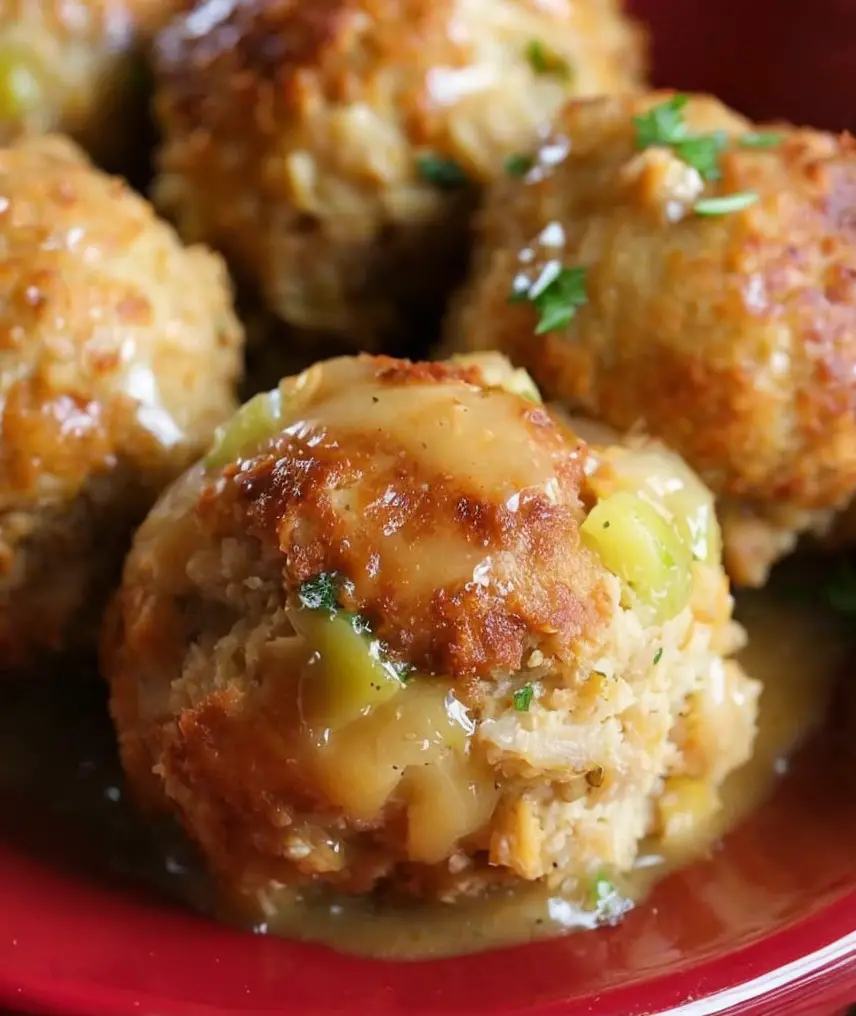Cranberry Pineapple Upside-Down Cake – The Best Festive Dessert
Welcome to the delightful world of desserts, where our Cranberry Pineapple Upside-Down Cake reigns supreme as the best festive dessert! Bursting with color and flavor, this show-stopping cake is a celebration of tropical harmony. The sweetness of ripe pineapple pairs harmoniously with the tartness of fresh cranberries, resulting in a mouthwatering combination that dances on your taste buds. This cake creates a stunning centerpiece for any festive gathering, enveloping the room in aromas of baked fruit and caramelized sugar.
This cake isn’t just a feast for the senses; it’s also a nostalgic nod to tradition. Upside-down cakes have long held a special place in dessert history, embodying comfort and the joy of sharing with loved ones. This particular rendition elevates the classic recipe, making it perfect for winter holidays, family gatherings, or simply indulging yourself. Just imagine slicing through the golden brown top to reveal the vibrant red cranberries nestled beneath, creating an impressive visual that captures the essence of festive celebration!
Quick Recipe Highlights
- Flavor Profile: This cake features a delectable blend of sweet pineapple and tart cranberries, creating a perfect balance that excites the palate.
- Texture: The cake has a moist crumb with a slight chewiness from the cranberries, combined with a rich caramel topping that adds contrast.
- Aroma: The mingling scents of caramelized fruit, vanilla, and butter waft from the oven, enticing everyone in the vicinity.
- Visual Appeal: The vibrant colors of the cranberries and golden pineapple create a stunning presentation, making it an eye-catching dessert.
- Skill Level Needed: This cake requires intermediate baking skills, particularly in mastering the upside-down technique.
- Special Equipment: Typically, a round cake pan is required along with basic baking utensils such as a mixer and spatula.
Recipe Overview
- Difficulty Level: This intermediate-level recipe involves techniques such as caramelization and careful layering that may require some practice but yield impressive results.
- Category: Perfect as a dessert, this cake can also double up as a brunch treat, making it versatile for various meal categories.
- Cuisine: Rooted in American culinary traditions, this cake reflects seasonal ingredients, making it popular during festive times.
- Cost: The ingredients for this Cranberry Pineapple Upside-Down Cake are relatively low-cost, making it accessible for all occasions.
- Season: This dessert shines during winter months, particularly around holidays when both cranberries and pineapples are at their best.
- Occasion: Whether it’s Thanksgiving, Christmas, or a seasonal picnic, this cake serves as a delightful ending to any festive meal.
Why You’ll Love This Recipe
The taste and texture of the Cranberry Pineapple Upside-Down Cake create an unforgettable experience with every bite. The moist, fluffy cake absorbs the fruity juices, while the caramelized pineapple and tart cranberries provide layers of flavor that keep you coming back for more. It impresses both family and guests, making any gathering feel special.
Convenience is a significant factor in this recipe’s appeal. The cake can be prepared ahead of time, allowing flavors to meld beautifully. With straightforward ingredients and clear steps, even novice bakers can succeed in creating this masterpiece. In addition, cleanup is minimal, so you can spend more time enjoying the festivities.
Nutritionally, this cake isn’t just indulgent; it also provides a unique mix of vitamins from cranberries and pineapples. These fruits offer antioxidants and dietary fiber that contribute to a balanced diet. Enjoying this dessert allows you to savor sweet moments without overwhelming guilt.
This cake is perfect for social gatherings, beautifully presented, and easy to share. Its vibrant colors and impressive layers naturally draw attention, making it a delightful talking point during parties and dinners. It’s a dessert that encourages conversations and memories around the table.
Cost-effectively, this recipe uses readily available ingredients that won’t break the bank. It’s an economical choice for festive occasions, allowing you to treat your guests without sacrificing quality. The satisfaction from creating such an impressive dessert on a budget is a reward in itself!
Historical Background and Cultural Significance
The origins of the upside-down cake can be traced back to the early 20th century, a time when home baking became popular in America. The use of canned fruit, common at the time, inspired bakers to create this centerpiece dessert that turned heads. This version with cranberries and pineapple reflects the seasonal consciousness of using available fruits.
Culturally, the upside-down cake stands as a symbol of resourcefulness in cooking. Traditionally, it embodies the idea of using what you have at hand, transforming simple ingredients into an impressive dish that dazzles at family gatherings. Its significance as a communal dish enhances its status during festive seasons.
Over the years, variations of this cake have emerged, incorporating different fruits and flavors, yet the essence remains rooted in its classic preparation. This includes adding spices or amending the fruits based on seasonal availability while still celebrating that delightful surprise when the cake is turned out.
Regional adaptations have resulted in numerous flavors and combinations, showcasing local produce and tastes. Today, you may find versions with peaches, cherries, or even a mix of tropical fruits that reflect the community’s preferences, but the core concept remains a beloved favorite among dessert enthusiasts.
Ingredient Deep Dive
Cranberries: These vibrant berries not only add a burst of color to the cake but also contribute to health benefits, including antioxidant properties that promote heart health. When selecting cranberries, look for firm, bright red berries. Store in the refrigerator for freshness, and if frozen, they can last several months. If fresh cranberries are unavailable, dried can serve as a suitable substitute, providing sweetness and a chewy texture.
Pineapples: Pineapples offer a tropical sweetness that perfectly complements tart cranberries. When using fresh pineapple, opt for those with a sweet aroma and a slight give when squeezed. To store, keep it at room temperature until ripe, then refrigerate. For a simplified version, canned pineapple is an excellent alternative, ensuring ease of preparation while still delivering delicious flavor.
Common Mistakes to Avoid
- Using an incorrect pan size can lead to uneven baking; always match the pan size to the recipe.
- Not preheating the oven causes cakes to cook unevenly; this step is crucial for a perfect rise.
- Using fruit that is overly ripe may create a soggy texture and overly sweet cake.
- Skipping the caramelization process can result in a less flavorful topping; take the time to caramelize thoroughly.
- Overmixing the batter can lead to a dense cake; mix until just combined for a light and airy texture.
- Not letting the cake cool slightly before inverting can cause the fruit to stick; a proper cooling time helps with the removal.
- Using cold ingredients directly from the fridge can affect the batter’s consistency; bring ingredients to room temperature for best results.
- Rushing the cooling process can compromise flavor; allow the cake to fully cool and soak up the juices for optimal taste.
- Using imitation flavors instead of real extracts can ruin the cake’s true flavor profile; always use pure extracts.
- Neglecting to read the entire recipe before starting can lead to missed steps; familiarity with the process ensures smoother execution.
Essential Techniques
Caramelization: Caramelization is essential for achieving that golden, sticky topping that adds depth to the cake’s flavor. To master this technique, be sure to use medium heat and constantly stir the sugar until it melts evenly. Watch for a deep amber color, as this indicates it’s ready.
Layering Fruits: Understanding how to properly layer fruits ensures an attractive presentation upon serving. Start with the firmer fruit at the bottom, allowing it to hold its shape during baking, while softer fruits like cranberries go on top to avoid disintegration.
Pro Tips for Perfect Cranberry Pineapple Upside-Down Cake
1. Use fresh cranberries when possible for the best flavor; frozen can work in a pinch but may release more liquid.
2. Allow the caramel to cool slightly before layering on the fruit to prevent steaming and maintain texture.
3. Experiment with different fruit combinations for personalization; berries, peaches, or even apples can work beautifully.
4. Once flipped, allow the cake to rest so the juices soak into the cake; this enhances flavor and moisture.
5. Serve with whipped cream or vanilla ice cream to elevate the dessert experience and balance flavors.
6. Consider adding spices like cinnamon or nutmeg into the batter for added warmth and depth.
7. Pay close attention to the baking time, as overbaking can dry out the cake; check for doneness with a toothpick.
8. Make sure to grease the pan well; a non-stick spray can help with easier cake removal.
Variations and Adaptations
Regional variations might include adding spices that reflect local traditions, such as ginger or cloves. Seasonal adaptations can be made by swapping cranberries for fresh strawberries in the spring or ripe peaches during summer. For dietary modifications, consider using whole wheat flour for a healthier twist or a gluten-free mix for dietary needs. Flavor variations can include adding orange zest for a citrus touch or even using flavored extracts like almond or coconut. Texture modifications may involve folding in chopped nuts for added crunch or substituting half the flour for ground oats. Presenting the cake in a cast-iron skillet lends a rustic look, while individual servings can be created with muffin-size portions.
Serving and Presentation Guide
Plating the Cranberry Pineapple Upside-Down Cake can be as simple as inverting onto a beautiful cake stand. Garnishing the top with mint leaves not only enhances color but offers a refreshing contrast. Traditional accompaniments include a dollop of whipped cream or a scoop of ice cream, which can also add a luscious contrast to the tangy flavors of the cake. For a modern twist, serving in slices alongside a warm berry compote provides additional flavors and visual textures. As for temperature, serving slightly warm is ideal to complement the fruits’ natural aromas, while allowing for easy portion control will keep servings consistent.
Wine and Beverage Pairing
When considering a wine to pair, opt for a sweet Riesling or a light Moscato, as both enhance the fruity notes of the cake without overpowering it. For non-alcoholic options, a sparkling cider or a refreshing iced tea can balance the sweetness of the dessert. If enjoying coffee or tea, consider a light-bodied brew, like a green tea or vanilla latte, which will add a comforting finish without clashing with the flavors. Temperature-wise, serve wines chilled and teas hot to provide a delightful contrast to the warm cake.
Storage and Shelf Life
To store, keep the Cranberry Pineapple Upside-Down Cake covered in an airtight container at room temperature for up to 3 days or in the refrigerator for up to a week. For longer storage, consider freezing individual slices wrapped in plastic wrap and stored in a freezer-friendly bag, where they can last up to 3 months. Signs of spoilage include mold formation or unusual smells. To reheat, pop slices in the microwave for about 20-30 seconds or warm gently in the oven until just heated through, ensuring it won’t dry out. Freezing the cake before icing can also be beneficial for maintaining moisture in the cake.
Make Ahead Strategies
Prep for the Cranberry Pineapple Upside-Down Cake can be done a day in advance by prepping the fruit and making the caramel ahead of time. Store the fruit in the refrigerator and the caramel in an airtight container. On the day of serving, simply assemble and bake the cake, allowing for rapid preparation and smooth execution on gathering day. If making ahead, consider underbaking slightly to prevent drying out upon reheating. Fresh elements like whipped cream can always be added right before serving for maximum freshness.
Scaling Instructions
Halving the recipe can work fine with a smaller cake pan, while doubling the quantities can turn it into a generous crowd-pleaser, using a larger pan such as a 9×13 inch. If tripling the amount, consider using multiple pans to ensure even baking or increase cooking time accordingly. Always adjust your oven temperature slightly when making larger quantities to ensure evenly baked results. Store leftovers in separate containers to maintain freshness, as larger portions tend to dry out more easily.
Nutritional Deep Dive
This cake primarily offers a balance of macronutrients; you can expect carbohydrates from the sugars and flour used, while enjoying small amounts of protein. The micronutrient profile includes vitamins C and A from the fruit, contributing to an overall healthier dessert option. Regular consumption of cranberries has shown to support heart health and immune function, further enhancing the nutritional benefits of this dessert. Portion control is essential, especially when monitoring sugar intake, but a slice of this cake can fit well into a balanced diet.
Dietary Adaptations
For gluten-free individuals, swap regular flour with a gluten-free blend to adapt this recipe accordingly. A vegan version can be created by substituting eggs with flax eggs and using plant-based butter. Dairy-free options include using coconut milk for moisture and creaminess without compromising flavor. Low-carb substitutes such as almond flour and sugar alternatives can make this dessert suitable for keto diets. Paleo enthusiasts can replace sugars with honey or maple syrup while using nut flours. For those monitoring FODMAPs, utilizing suitable fruits and gluten-free flour is recommended. Each adaptation maintains the integrity of the original recipe while ensuring dietary requirements are met.
Troubleshooting Guide
If your cake has a texture issue, it may be due to overmixing; ensure just to mix until ingredients are combined for a light and airy cake. Achieving the right flavor balance can take some adjustments; consider adding a pinch of salt to enhance sweetness without overwhelming. Temperature problems during baking often arise from incorrect oven settings; always preheat your oven to ensure consistency. If your fruit turns mushy, avoid overly ripened selections and ensure even layering. For ingredient substitutions, keep in mind that ratios might vary and always check consistency. Timing concerns can arise due to oven variances; use a toothpick to check for doneness at different intervals as needed.
Recipe Success Stories
Community feedback highlights how this cake not only tastes delicious but also serves as a memorable part of family gatherings. Many readers have shared their success stories using leftover fruit, illustrating the flexibility of this cake’s recipe. Variations abound; some have adapted it to use mixed berries or even chocolate. Readers often suggest sharing tips and tricks on how they’ve achieved flawless results, including photographic works showcasing their beautiful creations. Simple adaptations transform this cake into a family favorite, proving its versatility.
Frequently Asked Questions
Can I make this cake ahead of time? Absolutely! You can prepare the fruit and caramel in advance, allowing for a quick assembly before baking. Storing the cake overnight in the refrigerator also enhances the flavors.
What should I do if my cake sticks to the pan? If you experience sticking, ensure you’ve greased the pan well before pouring the caramel and fruit, and allow it to cool for a few minutes before inverting.
Can I use frozen cranberries? Yes, frozen cranberries work well, but be prepared for a bit more liquid after thawing. You may want to reduce some sugar if that happens.
What fruits can I substitute for pineapple? Other fruits like peaches or apples can work beautifully; just ensure they have a similar cooking time to achieve the right consistency during baking.
Is this cake suitable for freezing? Yes! This cake freezes well; simply wrap it tightly in plastic wrap and store in a freezer-safe container.
How can I check if my cake is done baking? A toothpick inserted into the center should come out clean or with a few moist crumbs for doneness.
What toppings do you recommend? Whipped cream or a scoop of vanilla ice cream enhances texture and flavor, balancing the tartness of the cranberries.
Can I reduce the sugar content? Certainly! Consider using a sugar substitute or simply cutting back while ensuring the cake remains balanced in taste.
How can I make this cake more festive? Adding holiday spices like cinnamon or nutmeg can provide a seasonal twist for winter gatherings.
Is this cake gluten-free friendly? Yes, easily replace regular flour with a gluten-free blend to suit dietary needs while maintaining delicious flavors.
Additional Resources
Explore related recipes such as classic blueberry or pineapple upside-down cakes for more fruity delights. Consider diving into technique guides for effective cake preparation, or browse ingredient information to grasp the capabilities of various fruits. Equipment recommendations can assist in selecting the right baking tools to enhance your experience in the kitchen. Embracing seasonal variations allows you to adjust the flavors to suit available produce, making your baking truly versatile.
Join the Conversation
We love hearing feedback and sharing recipes! Join our community by sharing your culinary creations on social media with the hashtag #CranberryPineappleUpsideDownCake. Post your photography tips and tricks and help others achieve picture-perfect desserts. Leave recipe reviews and let us know how your variations turned out, inspiring others to get creative in their baking. Your engagement enriches our community, making baking an even sweeter experience.
The Recipe
Cranberry Pineapple Upside-Down Cake
Serves: 8
Prep Time: 20 mins
Cook Time: 40 mins
Total Time: 60 mins
Kitchen Equipment Needed
- 9-inch round cake pan
- Mixing bowl
- Electric mixer
- Spatula
- Measuring cups and spoons
Ingredients
- 1 cup fresh cranberries
- 1 cup pineapple slices (fresh or canned)
- 1/2 cup unsalted butter
- 1 cup sugar (divided)
- 1 cup all-purpose flour
- 1 tsp baking powder
- 1/2 tsp salt
- 2 large eggs
- 1 tsp vanilla extract
- 1/2 cup milk
Directions
- Preheat your oven to 350°F (175°C). Grease the cake pan with butter.
- In a small saucepan, melt butter along with 1/2 cup sugar over medium heat until bubbly, then pour into the bottom of the prepared pan.
- Arrange pineapple slices on top of the butter mixture, placing cranberries in between the pineapple pieces.
- In a mixing bowl, combine flour, baking powder, and salt; set aside.
- In another bowl, cream together remaining sugar and eggs until light and fluffy. Add vanilla and milk, combining well.
- Gradually add the flour mixture to the wet ingredients, mixing until just incorporated.
- Carefully pour the batter over the arranged fruit in the pan.
- Bake for 40 minutes, or until a toothpick comes out clean. Allow to cool in the pan for 10 minutes before inverting onto a serving plate.
Recipe Notes
- Use a toothpick to test for doneness.
- Feel free to adapt the fruits based on seasonality.
- If using canned pineapple, be sure to drain well.
- Could substitute almond flour for a gluten-free option.




